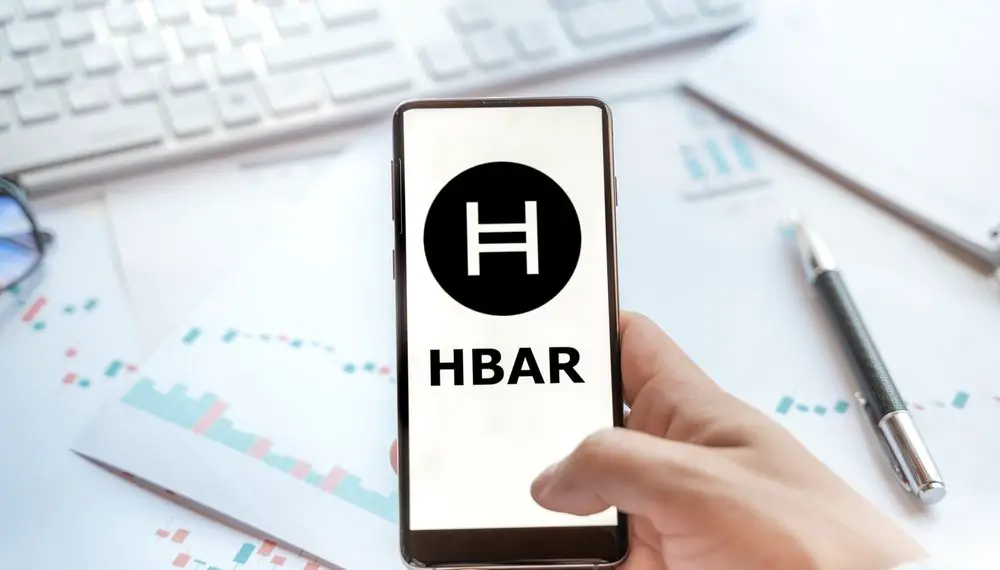Hedera Hashgraph is a decentralized public network that aims to address the limitations of existing blockchain technology, such as scalability, security, and performance. The native cryptocurrency of the Hedera network is the HBAR token. HBAR plays a crucial role in powering the network, securing the consensus mechanism, and serving as a medium of exchange for various use cases.
In this comprehensive guide, we will delve into the Hedera HBAR, exploring its underlying technology, use cases, and potential for the future. We will also discuss how HBAR tokens can be acquired, stored, and utilized by users within the Hedera ecosystem.
Section 1: Understanding Hedera Hashgraph Technology
1.1 Hashgraph vs. Blockchain
Hedera Hashgraph sets itself apart from traditional blockchain technology through its unique data structure and consensus mechanism. While blockchains rely on a linear, sequential chain of blocks, Hashgraph uses a Directed Acyclic Graph (DAG) structure, allowing transactions to be processed in parallel.
The consensus mechanism used by Hedera is called the Hashgraph consensus algorithm. Unlike Proof-of-Work (PoW) or Proof-of-Stake (PoS) algorithms, Hashgraph employs a gossip protocol and virtual voting to achieve consensus rapidly and securely. This approach enables the Hedera network to achieve high throughput, low latency, and robust security without the need for energy-intensive mining processes.
1.2 Hedera Network Components
The Hedera network comprises several components, including:
Nodes: Computers that participate in the network, validating and storing transactions.
Consensus Service: A service that facilitates consensus on the order of transactions and timestamps.
Governing Council: A group of organizations responsible for the governance and decision-making within the Hedera ecosystem.
HBAR Tokens: The native cryptocurrency of the Hedera network, used for transaction fees, staking, and various use cases.
Section 2: The Role of HBAR Tokens in the Hedera Ecosystem
2.1 Transaction Fees
HBAR tokens serve as the medium of exchange for transaction fees within the Hedera network. Users pay fees in HBAR to submit transactions, which are then distributed to the nodes that validate and store the transactions. These fees are designed to discourage spam and malicious activities on the network while providing an incentive for nodes to participate.
2.2 Network Security
The Hedera network relies on a Proof-of-Stake (PoS) model for its security. HBAR token holders can stake their tokens to nodes, helping secure the network and ensuring honest participation. In return, they can earn a portion of the transaction fees collected by the nodes. This staking model creates a financial incentive for users to act in the best interests of the network and helps maintain the integrity of the consensus process.
2.3 Use Cases
HBAR tokens can be utilized in various use cases within the Hedera ecosystem, including:
Micropayments: The low transaction fees and fast confirmation times of Hedera make HBAR suitable for micropayments, enabling new business models and revenue streams.
Decentralized Finance (DeFi): HBAR can serve as collateral, be lent and borrowed, or facilitate decentralized trading on DeFi platforms built on Hedera.
Digital Identity: HBAR tokens can be used to secure and verify digital identity information on the Hedera network, enabling secure and privacy-preserving identity solutions.
Smart Contracts: Developers can build and deploy smart contracts on the Hedera network, using HBAR tokens to pay for contract execution and storage.
Section 3: Acquiring, Storing, and Using HBAR Tokens
3.1 Acquiring HBAR Tokens
HBAR tokens can be acquired through various methods, including:
Cryptocurrency Exchanges: HBAR tokens can be purchased on various cryptocurrency exchanges using fiat currency or other cryptocurrencies. Some popular exchanges that list HBAR include Binance, Kraken, and Bitrue. Before choosing an exchange, ensure it supports your preferred trading pairs and has a good reputation for security and reliability.
Over-the-counter (OTC) Trading: For large-scale purchases or sales of HBAR tokens, Over-the-counter (OTC) trading desks can provide personalized service and price stability. OTC trading desks typically offer lower fees and a more private experience than public exchanges.
Staking Rewards: Users who stake their HBAR tokens to nodes can earn a portion of the transaction fees collected by the nodes as a reward. This method allows users to acquire more HBAR tokens while contributing to the network’s security and stability.
Hedera Grants and Incentives: Hedera occasionally offers grants, bounties, or incentives to developers, users, and organizations that contribute to the growth and development of the ecosystem. By participating in these programs, you may be able to earn HBAR tokens for your efforts.
3.2 Storing HBAR Tokens
HBAR tokens can be stored in various types of wallets, such as:
Software Wallets: Software wallets are applications that can be installed on your computer or mobile device. Some popular software wallets that support HBAR tokens include Exodus, Atomic Wallet, and the official Hedera Wallet.
Hardware Wallets: Hardware wallets are dedicated devices that securely store your private keys offline, providing enhanced security against hacks and theft. Leading hardware wallet providers, such as Ledger and Trezor, offer support for HBAR tokens.
Custodial Wallets: Custodial wallets are offered by third-party providers, such as cryptocurrency exchanges or financial institutions. With these wallets, the provider holds your private keys and manages your assets on your behalf. While they offer convenience, custodial wallets may have a higher risk of hacks or loss of funds due to the centralized nature of their storage.
3.3 Using HBAR Tokens
To use HBAR tokens within the Hedera ecosystem, you will need to follow these general steps:
Transfer HBAR tokens to your wallet: After acquiring HBAR tokens on an exchange or through other means, transfer them to a compatible wallet to maintain control of your assets.
Interact with Hedera applications: Many applications and services built on the Hedera network require HBAR tokens to operate. To use these applications, follow their specific instructions and send the required amount of HBAR tokens from your wallet to the designated address or smart contract.
Stake HBAR tokens: To stake your HBAR tokens, choose a node to delegate your tokens to, and follow the staking instructions provided by the node operator or your wallet provider.
Manage your HBAR tokens: Regularly monitor your HBAR token balance, track your staking rewards, and stay informed about the latest developments and opportunities within the Hedera ecosystem.
Conclusion
Hedera HBAR is a unique and innovative cryptocurrency that aims to address the limitations of traditional blockchain technology. With its advanced Hashgraph consensus algorithm, the Hedera network provides a scalable, secure, and energy-efficient platform for a wide range of use cases. By understanding the role of HBAR tokens in the Hedera ecosystem and learning how to acquire, store, and utilize them, you can be a part of this exciting new chapter in the world of decentralized technology.






